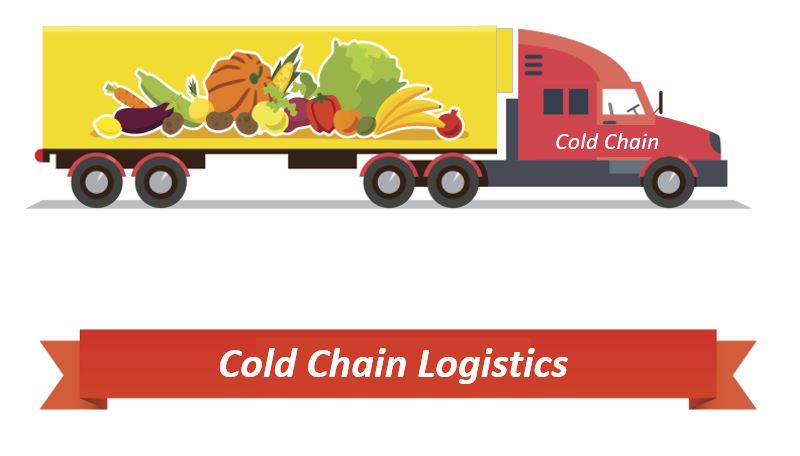Cold chain logistics, including quality control and monitoring of produce during transport and distribution, is a major issue in the agri-food sector. The biggest challenge is to ensure a continuous cold chain (maintain cold chain integrity) from producer or supplier through to the retailer and, ultimately, to the consumer. For that it is necessary to count on appropriate monitoring and control systems and technologies, as well as techniques of collection and analysis of reliable data.
Currently, the FAO (Food and Agriculture Organization) estimates that one-third of the world’s food production is wasted, principally since:
- the measurement systems used do not provide truthful information about the status of the produce and its condition
- control systems do not work perfectly or are not applied as rigorously as is required
As an agronomist, my doctoral thesis addresses the application of new cold chain logistics control techniques and methods for monitoring and ensuring cold chain integrity. I focused on cold chain logistics monitoring systems, especially in the phase of analysis of data and the use of new technologies to reduce the incidence of changes in the quality of perishable produce when environmental variations occur.
Cold Chain Logistics Experiments
In researching my thesis relating to cold chain logistics, the experimental work was carried out in five phases:
- I first made a study of the use and management of wireless sensors, RF (Radio Frequency) Technologies in a commercial cold storage distribution center. In this study I found significant weaknesses in the management of the produce and spots with gaps for improvement in the construction of wireless modules.
- Then I tested different methods of predicting temperatures in a fully-loaded produce refrigerated container (20 ft). This approach proved valid with errors lower than 0.5 ° C, making it useful since it can dispense with certain points of direct measurement and reduce the number of sensors.
- Sensors were applied in pallets of produce, the most efficient technique for predicting temperatures selected in the previous study. For this method I used a thermal image/ infrared spectrum as temperature reference. This method eliminates the need for fixed measuring points but has a great variability of results depending on the types of produce.
- Next, I studied the feasibility of monitoring pallets of produce (specifically chard and cucumber) using thermographic imaging while the produce is already covered with thermal covers. In this regard, there is a lot to study, and it is not an easy task to assess as there are many variables involved, such as cover materials emissivity, actual surface temperature, type and density of the produce, and water condensation and evaporation of the produce. Consequently, a direct measurement without parameter adjustments could lead to errors in the results.
- Finally, there was a characterization of three types of thermal covers for pallets and different types of produce: leaf (chard), fruit (cucumber) and root (carrot). All covers augmented the warming time compared with having no cover; in addition, with two of the three covers, undesired condensations occur.
Cold Chain Logistics Applications
The cold chain logistics experiments of this thesis are focused on solving real problems that occur daily in industry. Therefore, all the knowledge acquired is transferable directly to the food industry that is working with perishable produce, which can help with reducing costs and food waste.
Cold Chain Logistics Conclusions
RF technologies use should be integrated as regular procedure from harvest to customers for real-time monitoring in the cold chain logistics system. This gives the ability to react in a timely manner for unexpected cold chain integrity breaks, reducing the field times, learning and correcting inefficiencies from precooling, or maintaining the proper conditions for the produce in critical points such as transitions or store storage.
Given the ubiquity of the thermal image temperature measurement points combined with the temperature estimation, it is recommended to implement these technologies at warehouses or distribution centers to serve as a complement for the RF technologies and freshness management solutions and create a completed cold chain logistics system. This can also serve as an affordable solution with reduced measurement sources, both with temperature estimation methods or thermal IR image with temperature estimation. However, the use of thermal IR image used must be calibrated for the specific characteristics of each produce, packaging, or cover that is desired to be controlled.
Lastly, the use of adequate covers on pallets would reduce the impact on temperature excursions and especially on most temperature sensitive produce, reducing the temperature base decay.
These approaches – monitoring and managing produce at the pallet level – improve cold chain logistics and help to ensure delivered freshness and reduce food waste, which is what Zest Fresh is all about.
Dr. Ricardo Badia is the Consulting Agronomist at Zest Labs. He obtained his PhD in Agro Engineering from the Polytechnic University of Madrid. Dr. Badia’s thesis received the Extraordinary PhD Thesis Award (2016/2017), from the Polytechnic University of Madrid for the novelty in the engineering world and the impact on the agronomic scientific field.


